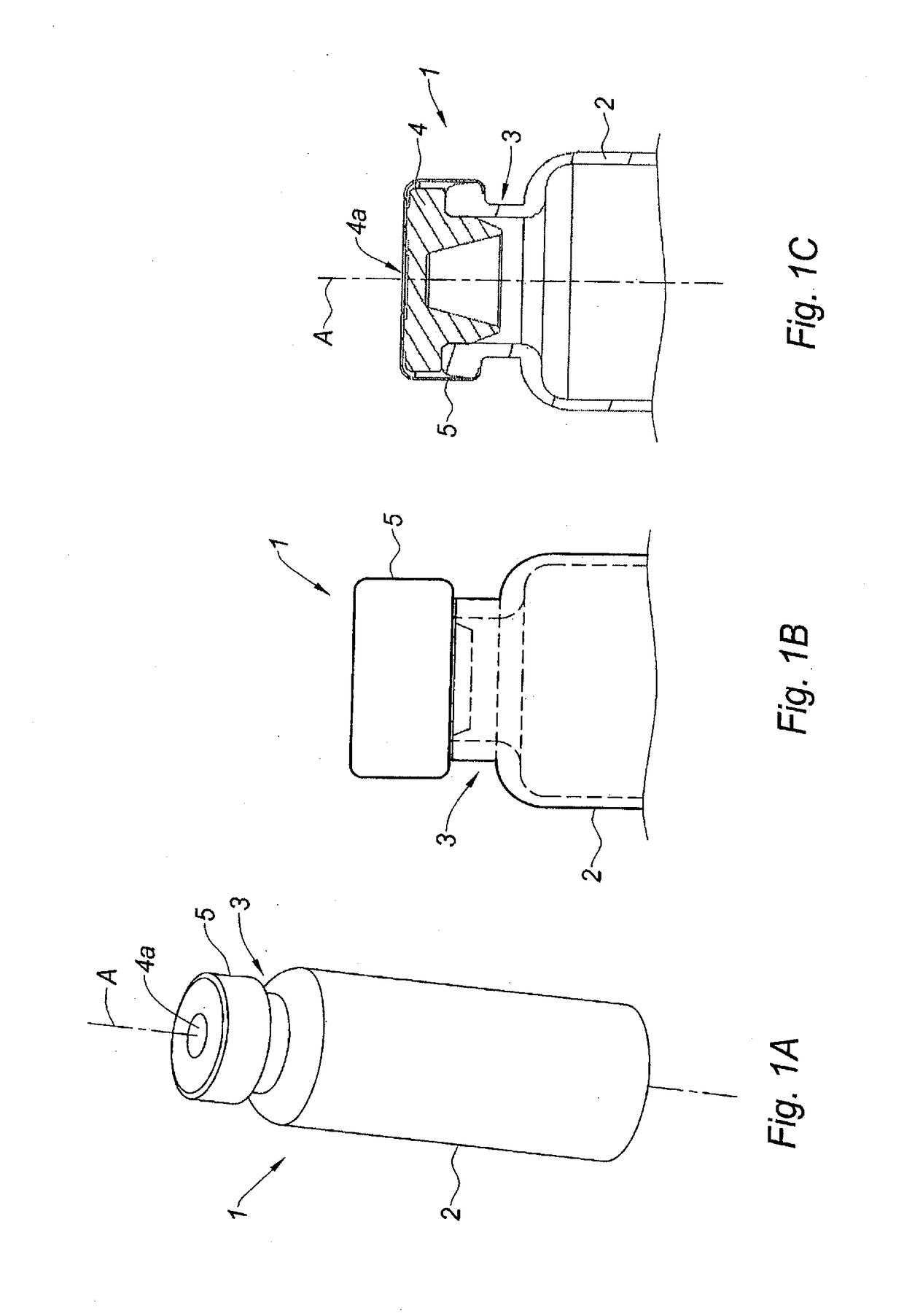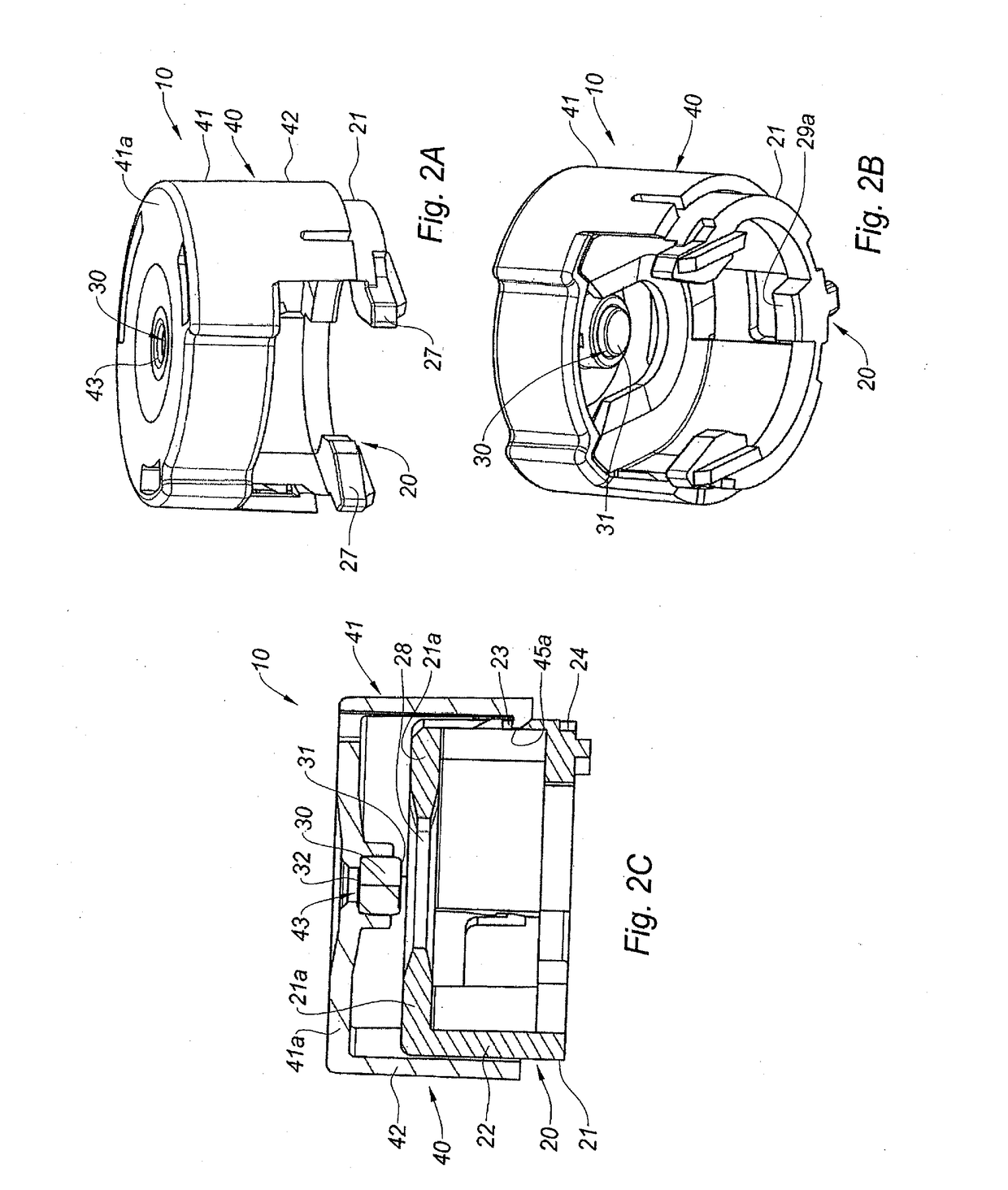Adaptor for Coupling with a Medical Container
a technology for adaptors and medical containers, applied in the direction of diagnostics, packaging goods, household articles, etc., can solve the problems of destroying the biological elements of vaccines, affecting the hygienic conditions of the environment, and many vaccine compositions are usually not stable at room temperature, so as to avoid contamination and improve hygienic conditions
- Summary
- Abstract
- Description
- Claims
- Application Information
AI Technical Summary
Benefits of technology
Problems solved by technology
Method used
Image
Examples
Embodiment Construction
[0075]With reference to FIGS. 2A-2C is shown an adaptor 10 in accordance with an embodiment of the invention, in a position for being mounted on a multidose vial 1 as shown on FIGS. 1A-1C. The adaptor 10 comprises a gripping member 20 intended to secure it onto the vial 1, and an elastomeric piece 30 which is pierceable by the needle of an injection device. The adaptor 10 also comprises a compressive member 40, for pressing the elastomeric piece 30 onto the outer surface 4a of the septum 4, when the adaptor 10 is secured on the vial 1. As will be shown from the description below, the compressive member 40 is capable to transition from an inactive state, in which it does not exert any pressure on the elastomeric piece 30, to an active state, in which it exerts such a pressure. In the embodiment shown, parts of the gripping member 20 and of the compressive member 40 are also useful in combination for forming a fixing system for preventing the release of the gripping member 20 and defi...
PUM
 Login to view more
Login to view more Abstract
Description
Claims
Application Information
 Login to view more
Login to view more - R&D Engineer
- R&D Manager
- IP Professional
- Industry Leading Data Capabilities
- Powerful AI technology
- Patent DNA Extraction
Browse by: Latest US Patents, China's latest patents, Technical Efficacy Thesaurus, Application Domain, Technology Topic.
© 2024 PatSnap. All rights reserved.Legal|Privacy policy|Modern Slavery Act Transparency Statement|Sitemap



